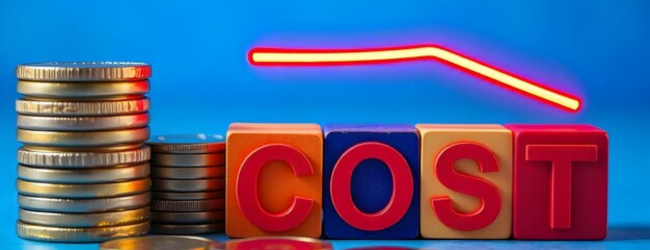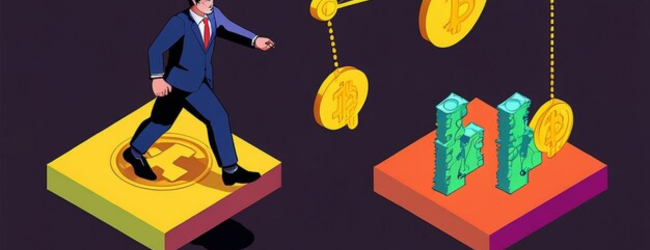Table of contents
In the world of economics, understanding how consumers react to price changes is crucial. This is where the concept of price elasticity of demand comes into play. Simply put, price elasticity of demand measures the responsiveness of the quantity demanded of a good or service to a change in its price. It helps businesses and policymakers understand how price adjustments will affect consumer behavior and, consequently, revenue.
Mathematically, it’s expressed as:
Price Elasticity of Demand (PED)= (%Change in Price)/(%Change in Quantity Demanded)
This metric is essential for businesses to make informed pricing decisions, predict sales, and optimize revenue. For policymakers, it helps in understanding the impact of taxes and subsidies on consumer behavior.
Types of Price Elasticity of Demand
Price elasticity of demand (PED) measures how much the quantity demanded of a good or service responds to a change in its price. The value of PED can fall into several categories, each indicating a distinct level of consumer responsiveness.

1. Perfectly Elastic Demand (PED = ∞)
- Detailed Explanation:
- Perfectly elastic demand occurs when any increase in price, no matter how small, leads to a complete cessation of demand.
- Consumers are infinitely sensitive to price changes.
- In this scenario, the demand curve is a horizontal line, indicating that at any price above the prevailing market price, quantity demanded is zero.
- This is a theoretical extreme, rarely seen in real-world markets.
- Real-World Example (Theoretical):
- Imagine a perfectly competitive market where numerous vendors sell identical products at the same price. If one vendor raises their price, even by a tiny fraction, consumers will instantly switch to other vendors.
- While this is hard to find in a large market, it could be possible in a very small local market, where multiple vendors sell identical commodities.
- Implications:
- In a perfectly elastic market, businesses have no pricing power. They must accept the prevailing market price.
2. Elastic Demand (PED > 1)
- Detailed Explanation:
- Elastic demand occurs when a change in price leads to a proportionally larger change in quantity demanded.
- Consumers are relatively sensitive to price changes.
- The demand curve is relatively flat, indicating a significant change in quantity demanded for even small price variations.
- Real-World Examples:
- Luxury Goods: High-end designer clothing, expensive vacations, and premium electronics often exhibit elastic demand. If the price of a luxury handbag increases, consumers may opt for a less expensive alternative.
- Non-Essential Items: Restaurant meals, entertainment, and non-essential services are often price-sensitive. If a restaurant raises its prices, customers may choose to dine elsewhere.
- Goods with Many Substitutes: If the price of one brand of coffee increases, consumers can easily switch to another brand.
- Implications:
- Businesses selling elastic goods should be cautious about raising prices, as it can lead to a significant drop in sales.
- Conversely, lowering prices can lead to a substantial increase in demand.
3. Unitary Elastic Demand (PED = 1)
- Detailed Explanation:
- Unitary elastic demand occurs when a change in price leads to an equal proportional change in quantity demanded.
- Total revenue remains constant regardless of price changes.
- This is a theoretical midpoint between elastic and inelastic demand.
- Real-World Example (Theoretical):
- Imagine a product where a 10% increase in price leads to a 10% decrease in quantity demanded. In this scenario, total revenue remains unchanged.
- Implications:
- Businesses in a unitary elastic market experience no change in total revenue from price adjustments.
💡 Pro Tip: If you want to start a Business but have too many doubts, connect with a Business expert from Boss Wallah for guidance – https://bw1.in/1116
4. Inelastic Demand (PED < 1)
- Detailed Explanation:
- Inelastic demand occurs when a change in price leads to a proportionally smaller change in quantity demanded.
- Consumers are relatively insensitive to price changes.
- The demand curve is relatively steep, indicating a small change in quantity demanded for even large price variations.
- Real-World Examples:
- Necessities: Essential goods like gasoline, electricity, and basic food items often exhibit inelastic demand. Even if the price of gasoline increases, people still need to purchase it for transportation.
- Essential Medicines: Life-saving medications, like insulin, often have inelastic demand because consumers have no substitutes.
- Addictive Goods: Products like cigarettes and alcohol can have inelastic demand due to addiction.
- Implications:
- Businesses selling inelastic goods can often raise prices without significantly impacting sales.
- This is why taxes are often placed on inelastic goods, to increase revenue.
5. Perfectly Inelastic Demand (PED = 0)
- Detailed Explanation:
- Perfectly inelastic demand occurs when quantity demanded remains constant regardless of price changes.
- Consumers are completely insensitive to price changes.
- The demand curve is a vertical line, indicating that quantity demanded is fixed at any price.
- Real-World Example (Rare):
- A life-saving medication where there are no substitutes. If a person needs this medication to survive, they will purchase it regardless of price.
- Implications:
- Businesses selling perfectly inelastic goods can charge any price without affecting quantity demanded.
- This is very rare in a free market.
ALSO READ | How & When to Use URL & URI :Main Differences
Factors That Impact Price Elasticity of Demand
The price elasticity of demand (PED) is not a static value; it varies based on several factors. Understanding these factors is crucial for businesses to make informed pricing decisions.

1. Availability of Substitutes (Most Significant Factor)
- Detailed Explanation:
- The more substitutes available for a product, the more elastic its demand. Consumers can easily switch to alternatives if the price increases.
- If there are few or no substitutes, demand tends to be inelastic, as consumers have limited options.
- Real-World Examples:
- Elastic: Different brands of soft drinks. If the price of Coca-Cola increases, consumers can easily switch to Pepsi or another brand.
- Inelastic: Gasoline. While there are some alternatives (electric cars, public transport), many consumers still need gasoline for their vehicles, making demand relatively inelastic.
- Detailed Insights:
- Businesses with unique products or strong brand loyalty have more pricing power.
- Markets with numerous competitors tend to have higher price elasticity.
2. Necessity vs. Luxury (Essential vs. Non-Essential)
- Detailed Explanation:
- Necessities, such as food, medicine, and basic utilities, tend to have inelastic demand. Consumers need these goods regardless of price changes.
- Luxuries, such as high-end fashion, expensive vacations, and premium entertainment, tend to have elastic demand. Consumers can easily forgo these items if prices rise.
- Real-World Examples:
- Inelastic: Prescription medications. Consumers with chronic illnesses will likely purchase necessary medications even if prices increase.
- Elastic: Designer handbags. If the price of a luxury handbag increases significantly, consumers may opt for a more affordable alternative.
- Detailed Insights:
- Businesses selling necessities have more pricing power than those selling luxuries.
- Economic conditions can shift goods from luxury to necessity (and vice versa).
3. Proportion of Income Spent (Significance of Expenditure)
- Detailed Explanation:
- The larger the proportion of income spent on a product, the more elastic its demand. Consumers are more sensitive to price changes for significant expenditures.
- Small expenditures, like salt or matches, tend to have inelastic demand, as price changes have a minimal impact on overall budget.
- Real-World Examples:
- Elastic: Housing. A significant increase in rent or mortgage rates can lead to a substantial decrease in demand for housing.
- Inelastic: Table salt. A small increase in the price of salt is unlikely to affect consumer demand significantly.
- Detailed Insights:
- Large purchases are more susceptible to price fluctuations.
- The perceived importance of the expenditure also plays a role.
4. Time Horizon (Short-Term vs. Long-Term)
- Detailed Explanation:
- Demand tends to become more elastic over time. Consumers have more time to find substitutes or adjust their consumption habits in the long run.
- In the short term, consumers may have limited options and exhibit inelastic demand.
- Real-World Examples:
- Short-Term Inelastic: Gasoline prices spike. In the short term, people still need to drive.
- Long-Term Elastic: Gasoline prices remain high. Over time, people may switch to electric vehicles, use public transport, or move closer to work.
- Detailed Insights:
- Businesses should consider the time frame when making pricing decisions.
- Long-term strategies should account for potential shifts in consumer behavior.
5. Brand Loyalty (Consumer Preferences)
- Detailed Explanation:
- Strong brand loyalty can make demand less elastic. Consumers who are loyal to a particular brand may continue to purchase its products even if prices increase.
- Consumers who are not brand loyal are more likely to switch to alternatives.
- Real-World Examples:
- Inelastic (Brand Loyalty): Apple products. Loyal Apple customers may continue to purchase iPhones and MacBooks even if prices are higher than competitors.
- Elastic (Low Brand Loyalty): Generic household cleaning products. Consumers are more likely to switch between brands based on price.
- Detailed Insights:
- Building strong brand loyalty can provide pricing power.
- Brands with low loyalty must focus on competitive pricing.
6. The Definition of the Market (Broad vs. Narrow)
- Detailed Explanation:
- The broader the definition of the market, the more inelastic the demand. For example, food as a whole is very inelastic. Specific types of food can be very elastic.
- Narrowly defined markets, with more specific items, tend to have higher elasticity.
- Real world examples:
- Inelastic (broad): Food. Even if the price of food increases, people still need to eat.
- Elastic (narrow): Organic Strawberries. If the price of organic strawberries increase, people can purchase normal strawberries, or another type of fruit.
- Detailed Insights:
- Market definition has a large impact on the data received.
- Depending on the product, market definition should be considered.
Key Takeaways

- Price elasticity of demand measures how much the quantity demanded of a good responds to a change in its price.
- It helps businesses predict how price changes will affect sales and revenue.
- Understanding the factors that influence PED is crucial for effective pricing strategies.
- The type of product being sold, and the availability of substitute products, are two of the largest factors in determining PED.
Need Expert Guidance?
Starting a business can be challenging, but you don’t have to do it alone! At Boss Wallah, our 2,000+ business experts are ready to provide valuable insights and guidance. Whether you need help with marketing, finance, sourcing, or any other area of any business, our business experts are here to help you succeed- https://bw1.in/1116
Confused about Which Business to Start?
Want to start your own business but unsure which one to choose? Explore Boss Wallah, where you’ll find 500+ courses by successful business owners, featuring practical, step-by-step guides on starting and growing various businesses. Find your perfect business idea today – https://bw1.in/1111
Conclusion
Mastering the concept of price elasticity of demand is essential for anyone involved in business or economics. By understanding how consumers react to price changes, businesses can optimize pricing strategies, maximize revenue, and make informed decisions. Policymakers can also use this knowledge to understand the impact of economic policies.
FAQs
- How do businesses use price elasticity of demand?
- Businesses use it to determine optimal pricing strategies, predict sales, and understand the impact of price changes on revenue.
- What is the difference between elastic and inelastic demand?
- Elastic demand means quantity demanded is highly responsive to price changes, while inelastic demand means it’s less responsive.
- Why is the availability of substitutes important for price elasticity?
- The more substitutes available, the easier it is for consumers to switch, making demand more elastic.
- What does a PED of 1 mean?
- A PED of 1 means unitary elastic demand, where the change in price results in an equal proportional change in quantity demanded.
- How is PED calculated?
- It’s calculated by dividing the percentage change in quantity demanded by the percentage change in price.


